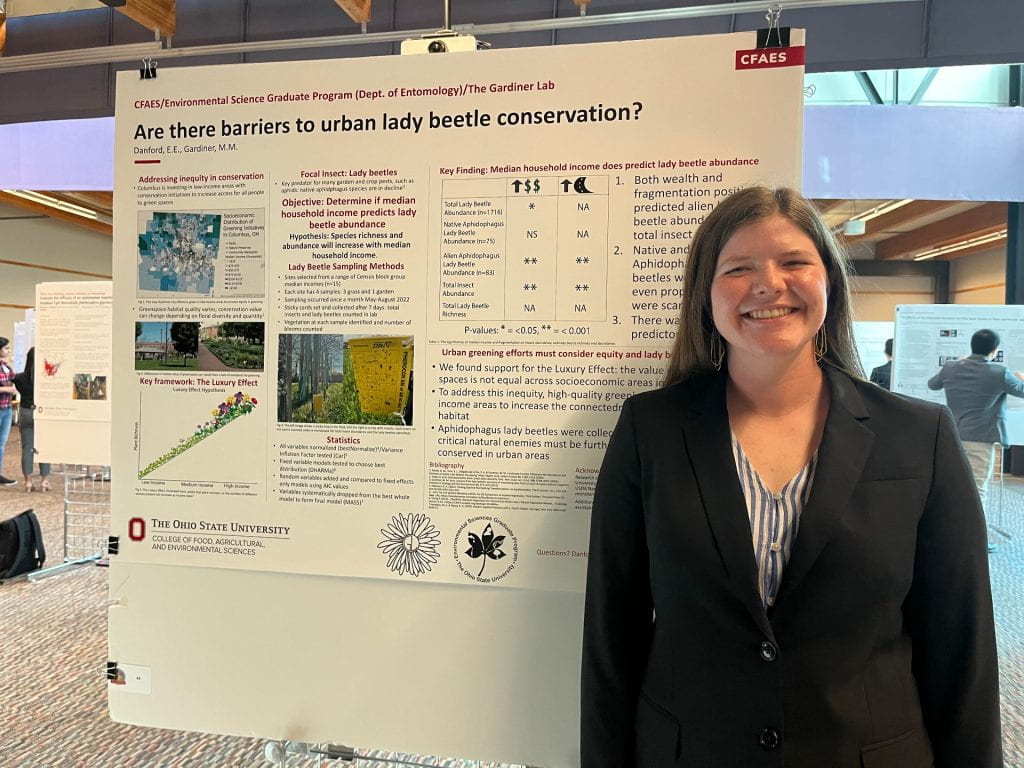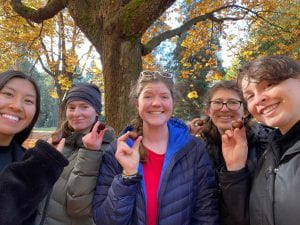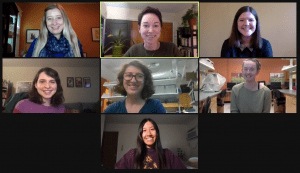The USDA National Institute for Food and Agriculture has announced their grant awardees for the Pests and Beneficial Species program and Frances Sivakoff and Mary Gardiner along with our collaborators Reed Johnson (OSU) and Amy Toth (ISU) are one of the 21 funded projects! See the full list of awardees at: https://nifa.usda.gov/announcement/usda-invests-76-million-research-pests-and-beneficial-species. Details about our new project below.
LANDSCAPE LEGACY AND URBAN AGRICULTURE: UNDERSTANDING THE IMPACT OF HEAVY METAL CONTAMINATION ON POLLINATOR HEALTH AND POLLINATION SERVICES
Project Summary: Cleveland OH’s formerly densely-populated inner-city neighborhoods now contain over 27,000 vacant lots as a result of protracted economic decline and the recent home foreclosure crisis. Currently, there are over 250 urban agroecosystems established on formerly vacant land across Cleveland. The sustainability of urban agriculture requires reliable ecosystem services, including pollination. A landscape legacy of heavy metal (HM) soil contamination represents a key threat to pollinators. We propose to study the impact of HM contamination on bee foraging behavior, bumblebee colony health, and pollination. Our work will begin by examining how soil HM contamination influences bee visitation and pollination services of focal crop plants (Objective 1). Next, we will focus on how foraging on contaminated provisions influences colony health, including reproductive potential, nutritional state, immunity, and detoxification (Objective 2). Third, we will track individual pollinators throughout an urban agroecosystem to determine how HM exposure influences their overall foraging patterns and efficiency (Objective 3). Finally, we will determine the weedy flora that provide key resources for pollinators and identify how these plants vary in their concentration of HM (Objective 4). In accomplishing our objectives, we will elucidate the effects of HMs on a vital ecosystem service necessary to attain sustainability and security in urban agriculture.

 will be researching if existing urban conservation efforts provide value for urban moth communities.
will be researching if existing urban conservation efforts provide value for urban moth communities. 







 Time to sample with all varieties of tools that may or may not be meant for catching bugs and soak in the sunshine as we move into the warmer months! We wish everyone a happy summer field season and a bee filled May term!
Time to sample with all varieties of tools that may or may not be meant for catching bugs and soak in the sunshine as we move into the warmer months! We wish everyone a happy summer field season and a bee filled May term! Congratulations Michelle for winning a NIFA pollinator travel award to attend and present at the IUSSI 2022 conference in San Diego this summer!
Congratulations Michelle for winning a NIFA pollinator travel award to attend and present at the IUSSI 2022 conference in San Diego this summer!




 Hello from the 2020-2021 Gardiner Lab! Zoom may be the normal for meetings, but we feel pretty original using it to take our lab photo. Here’s to a happy and healthy new school year of research!
Hello from the 2020-2021 Gardiner Lab! Zoom may be the normal for meetings, but we feel pretty original using it to take our lab photo. Here’s to a happy and healthy new school year of research!





































